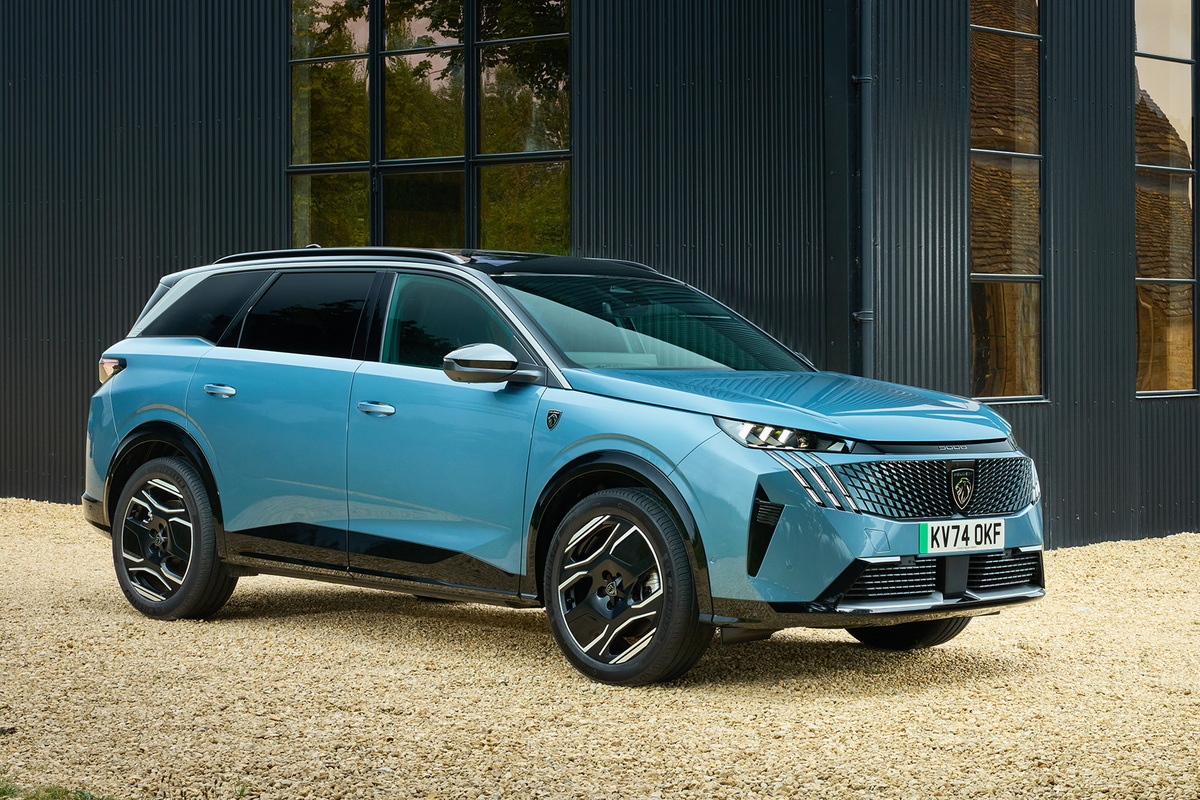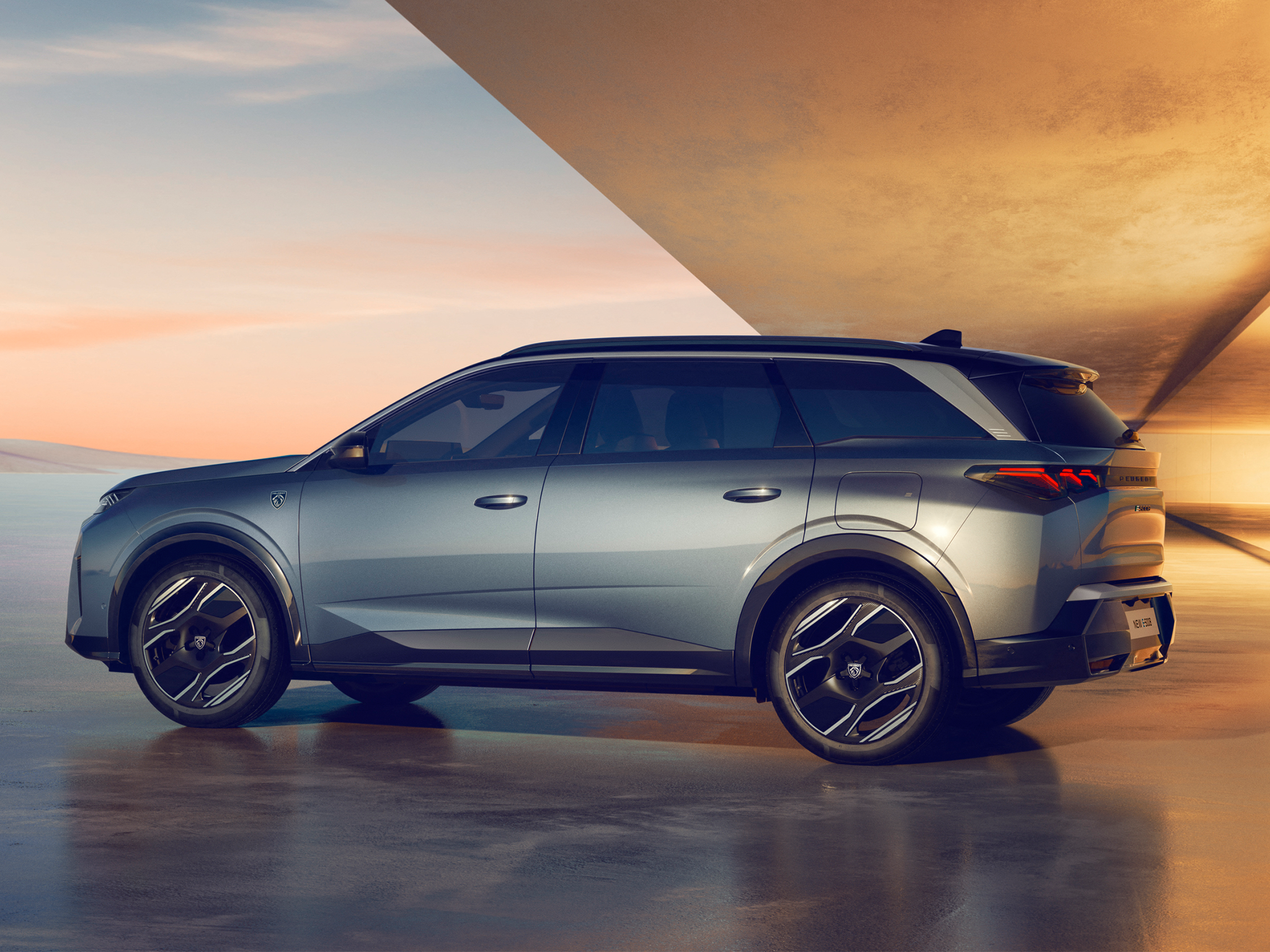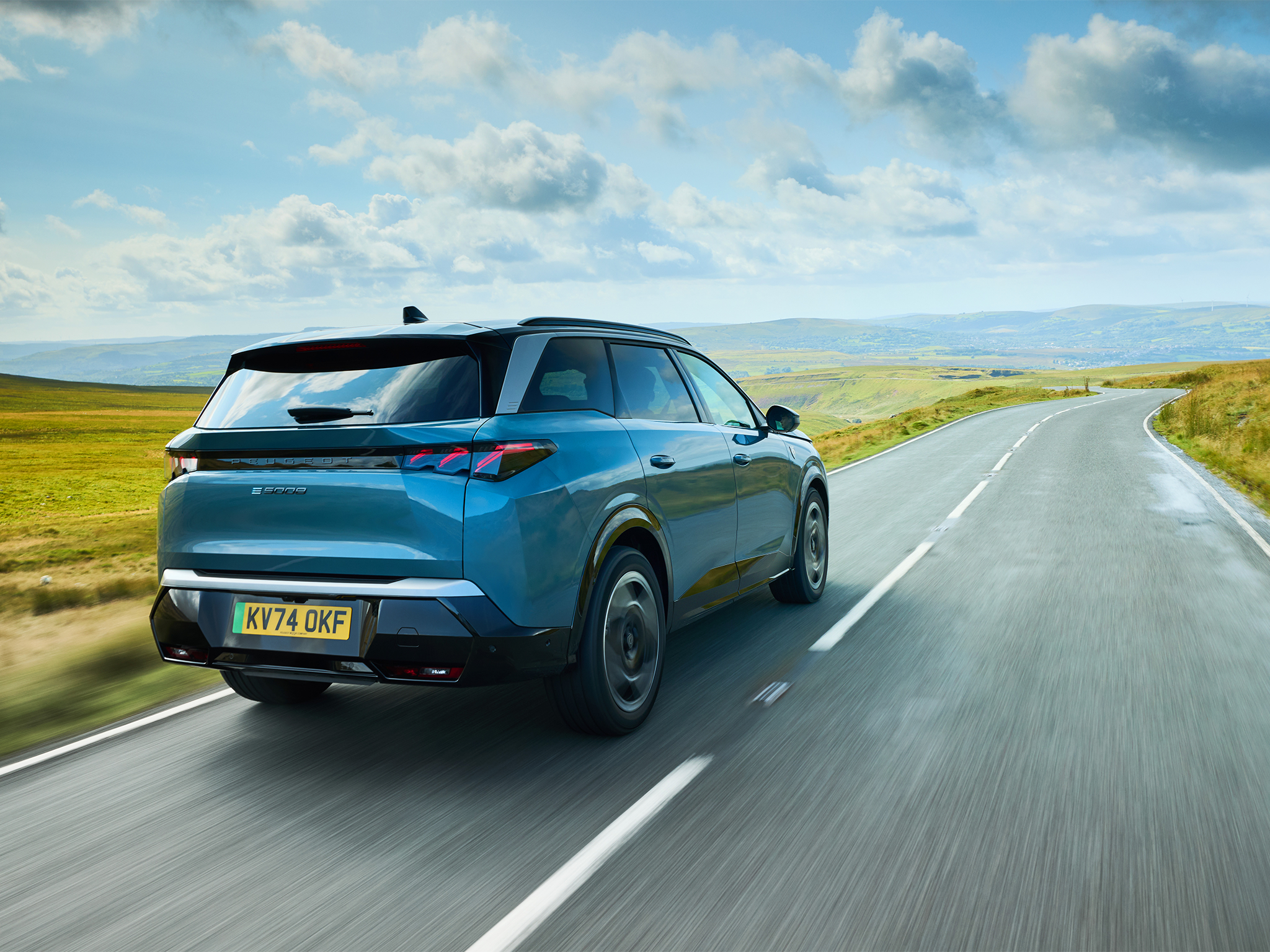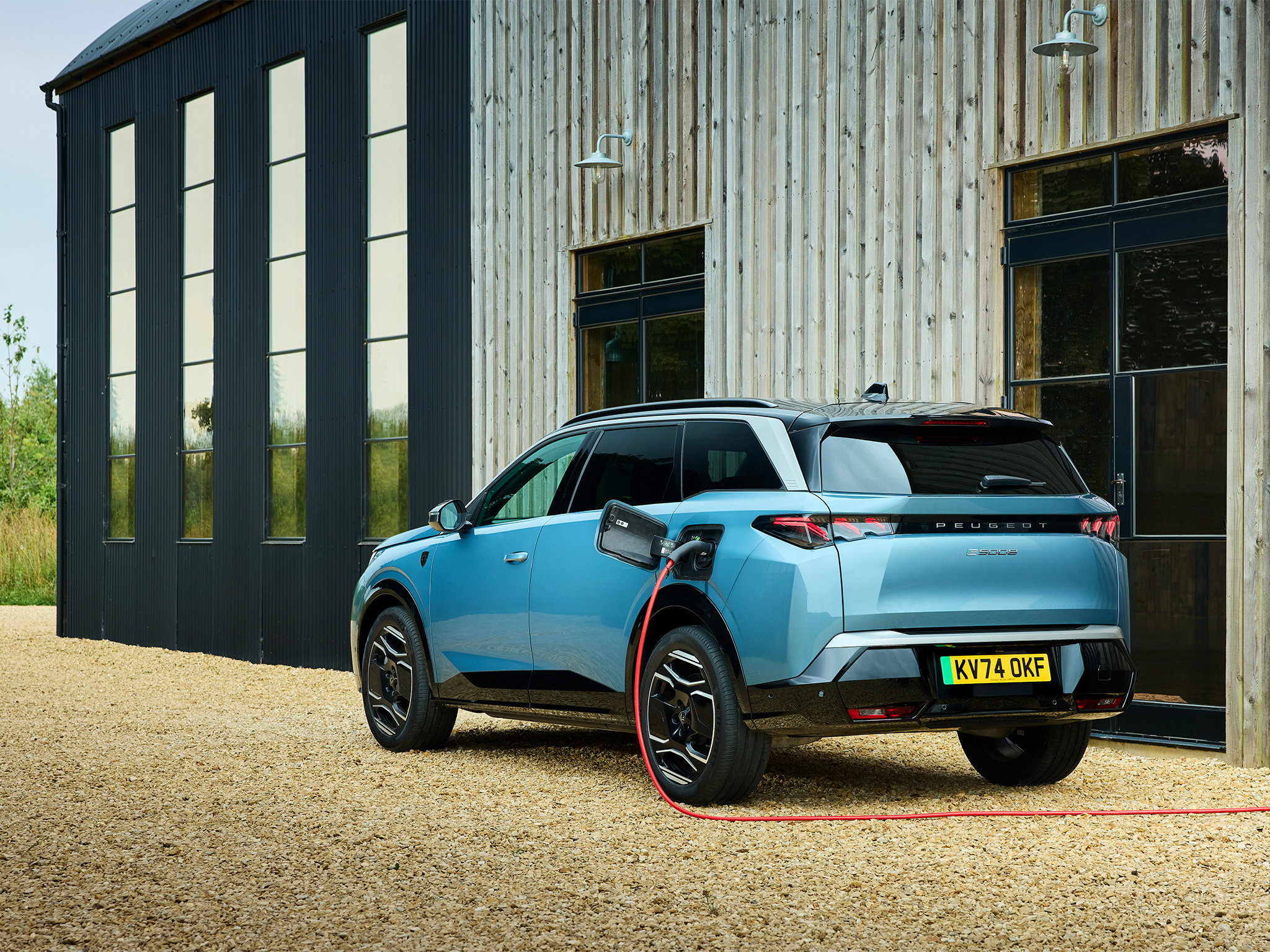
Searching for a seven-seat EV? The Peugeot e-5008 is one of the very few options on the table, but the lack of much competition hasn’t held it back. This seven-seater stands out with its unique blend of striking design and capacious, family-friendly interior. It promises over 300 miles of range, with the new long range model reaching 400 miles, ensuring practicality for daily life as well as longer trips.
Performance is geared towards comfortable cruising rather than outright speed, but it delivers ample standard kit, a composed ride quality and is more manageable in tight spaces than its dimensions suggest. Add the sporty feel of its compact steering wheel and the e-5008 makes a strong case as the go-to choice for seven-seat EV buyers.
How we tested
Our first test drive of the Peugeot e-5008 involved an intensive two-day international road trip, specifically designed to test its mettle across the varied driving conditions encountered between Sweden and Denmark.
This journey saw us navigate the tight confines and bustling traffic of Scandinavian town centres, assessing its manoeuvrability and low-speed refinement. We then stretched its legs on flowing rural routes and picturesque coastal roads, evaluating handling dynamics and ride comfort, before transitioning to occasional highway stretches to gauge its cruising capabilities and stability at speed.
Peugeot e-5008: From £48,660, Peugeot.co.uk

Independent rating: 8/10
Best: Seven-seat EV
- Pros: Seven seats, great range, lots of kit as standard
- Cons: Lacks driving engagement, bigger battery coming later, pricey compared to the hybrid
Peugeot e-5008 specs
- Price range: £48,660 to £52,295
- Battery size: 73 kWh (96 kWh coming later)
- Maximum claimed range: 410 miles
- Miles per kWh: 3.9
- Maximum charging rate: 160 kW
Battery, range, charging, performance and drive
The new Peugeot e-5008 is one of very few seven-seat EVs on the market, and for that reason alone is worthy of your attention. It launches with a single battery option of 73kWh, which has a claimed range of 311 miles, a power output of 208bhp and a 0-62 mph time of a leisurely nine seconds. A larger-capacity 96kWh model will be available later with a claimed 410 miles of range, along with a quicker, dual-motor version of the 73kWh car driven here.
The e-5008 can charge at up to 160kW, which has the potential to fill the battery from 20 to 80 percent in 30 minutes. That’s not as impressive as the massive claimed range, nor is it a patch on rivals from Tesla, Kia and Hyundai, but it’s not terrible.
We’ve only driven the single-motor car for now, but we can say with confidence that, despite the modest acceleration, it’ll be the right choice for most buyers.
Interior, practicality and boot space
The interior of the e-5008 is a triumph. As with other current Peugeots, it’s full of interesting details, quality materials and has a distinctive sense of character that others lack. It can feel bewildering at first, especially with the tiny steering wheel, but give it time and you’ll come to love it.
It’s a spacious cabin without feeling van-like, and while the middle row no longer has three individual seats as it did before, they still slide and recline, and offer loads of space. The third row has a pair of seats that, while awkward to access, offer decent room for adults who are unlikely to complain too much on short journeys. It’s a bit sparse back there though, with no air vents (let alone temperature control) and no USB charging sockets either.
Fold the third row flat and you get an impressive 748 litres of boot space in the Peugeot’s five-seat configuration.

Technology, stereo and infotainment
The dashboard of the e-5008 has three digital displays. Two sit next to each other in a single 21in housing and serve as the driver display and infotainment screen, while a third is mounted lower down and houses several customisable, digital shortcuts for getting to functions like music and navigation, as well as the application drawer and settings page.
It’s all logical enough, but the infotainment display’s driver-centric position forces the passenger to reach over if they want to adjust anything. We also found the climate controls fiddly, but as with most new cars you’ll grow accustomed to them soon enough. It otherwise looks smart and performs reasonably well, but we imagine most drivers will opt to use Apple CarPay or Android Auto instead, both of which are included in wired and wireless form.
There’s also wireless phone charging as standard, Bluetooth that can connect to two phones at once, plus navigation from TomTom with EV routing to help you find local chargers.
Prices and running costs
The Peugeot 5008 is available as a mild-hybrid, plug-in hybrid or fully-electric car. The full EV we’re focusing on here starts at £48,500 for the 73kWh version with a single motor and Allure trim. Upgrading to GT spec increases the price to £52,350, while the cost of the larger battery and dual-motor variants hasn’t yet been announced.
As with all EVs, running costs can be significantly lower than with an internal combustion car or a plug-in hybrid. This is especially true if you charge at home, and even more so when using cheaper night time electricity. Electricity is more expensive at public chargers, and is at its costliest when plugging into a high-speed charger at motorway services. Try to avoid these if you can.

Peugeot e-5008 rivals
- Mercedes EQB – The EQB offers a similarly compact seven-seat footprint, but the e-5008 counters with longer range.
- Kia EV9 – While both offer seven seats, the EV9 is a significantly larger, more luxurious, and more expensive proposition.
- Volkswagen ID.Buzz – The ID.Buzz offers the ultimate in passenger/cargo flexibility, though comes with fewer than seven seats as standard.
FAQs
What should I know before buying one?
While it's a highly practical seven-seater, the third row is best for occasional use by adults and lacks its own air vents or USB ports. You should also decide on whether you’d benefit from the bigger battery and dual-motor of the new long range version.
How long does it take to charge?
A respectable maximum charge rate of 160 kW means the e-5008 can fill its battery from 20 to 80 percent in 30 minutes, as long as it’s connected to an equally powerful charger. Plug it into a wallbox charge at home and the 73kWh battery will fill from empty in about seven hours. Naturally, the larger 96kWh model will take longer.
How much does it cost – is it worth it?
At just under £50,000, the e-5008 might seem expensive for a Peugeot, but there’s a real sense of quality to this car, both inside and out. It’s around £15,000 cheaper (and a far more manageable size) than the massive Kia EV9, which also seats seven.
Does Peugeot replace batteries for free?
All Peugeot EVs come with a battery warranty that lasts for eight years or 100,000 miles. As well as the battery pack itself, the warranty covers the motor, onboard charger, transmission and all other main electrical and mechanical components.
Why trust us
Our team of motoring experts have decades of experience driving, reviewing and reporting on the latest EV cars, and our verdicts are reached with every kind of driver in mind. We thoroughly test drive every car we recommend, so you can be sure our verdicts are honest, unbiased and authentic.
The verdict: Peugeot e-5008
The Peugeot e-5008 is the sort of car you can see easily slotting into your life, thanks to its seven-seat practicality, characterful design and ease of use. The strong range should also make this a great choice for EV newcomers wary of range anxiety.
Best electric cars 2025: Top 10 EVs to buy and the ones to avoid
10 fastest charging EVs we’ve tested
Best small electric cars 2025: Top 11 affordable compact EVs to buy
We’ve driven the new Tesla Model Y – is this the return of the EV king?
Porsche Macan 2025 review: An electrifying performance
Living with the Mini Aceman: It’s a hit with Gen Z
Smart #5 review: Tesla-rivalling family SUV is both big and clever
MG S5 EV: Stylish family SUV blends practicality and affordability







